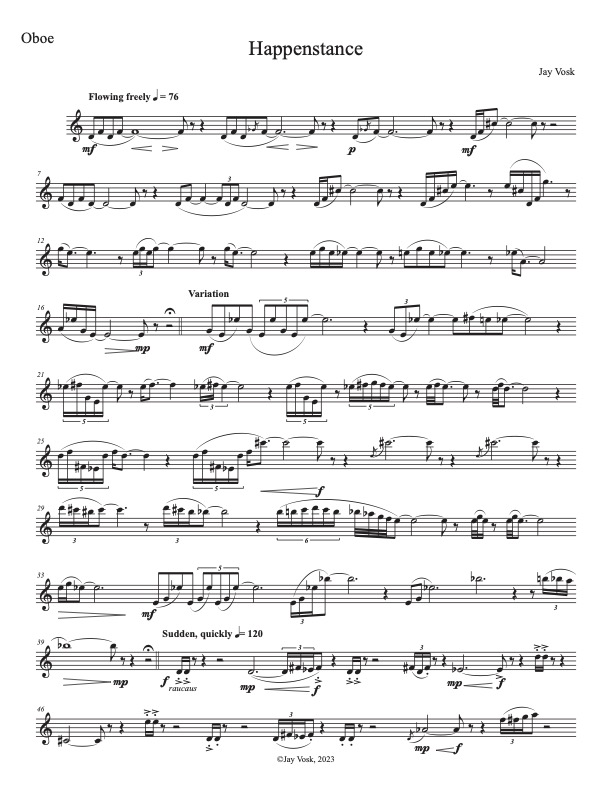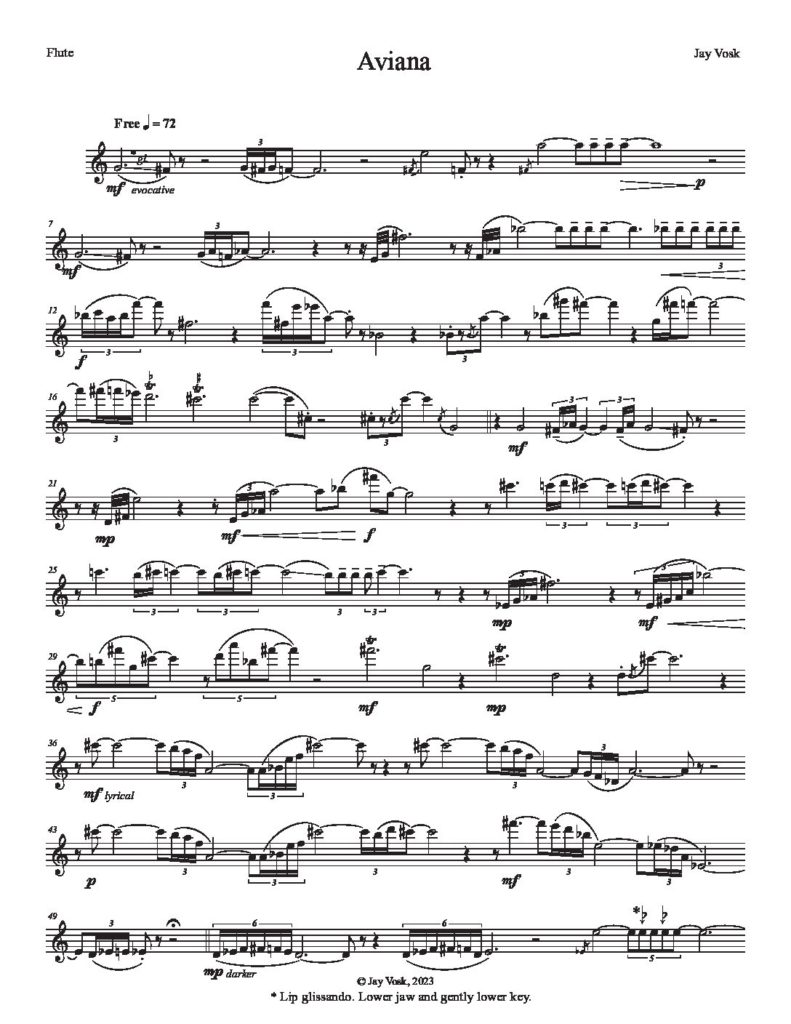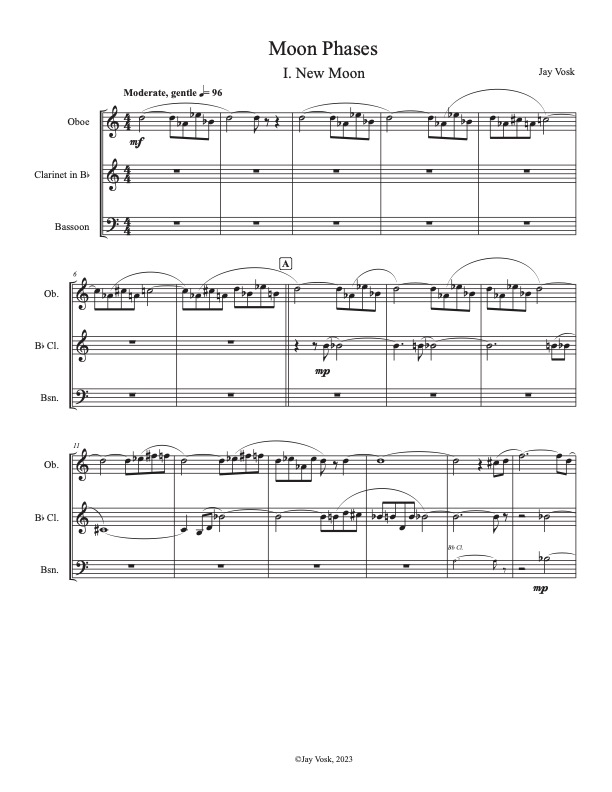
Be the first on your block to perform Happenstance! As the title suggests, Happenstance for oboe solo, came about merely by chance. There were no preconceived notions of form or style other than the work’s length and a few melodic figures running through my head. In approaching the work, I thought of the oboe less as a musical instrument and more as a solo personality acting out a bizarre monologue. The end result of my little experiment is a seven minute piece comprised of five short movements each with its unique character. It is my hope that the work is both fun and challenging to the performer.
A full score is available on request.
Listen to the midi version here:



